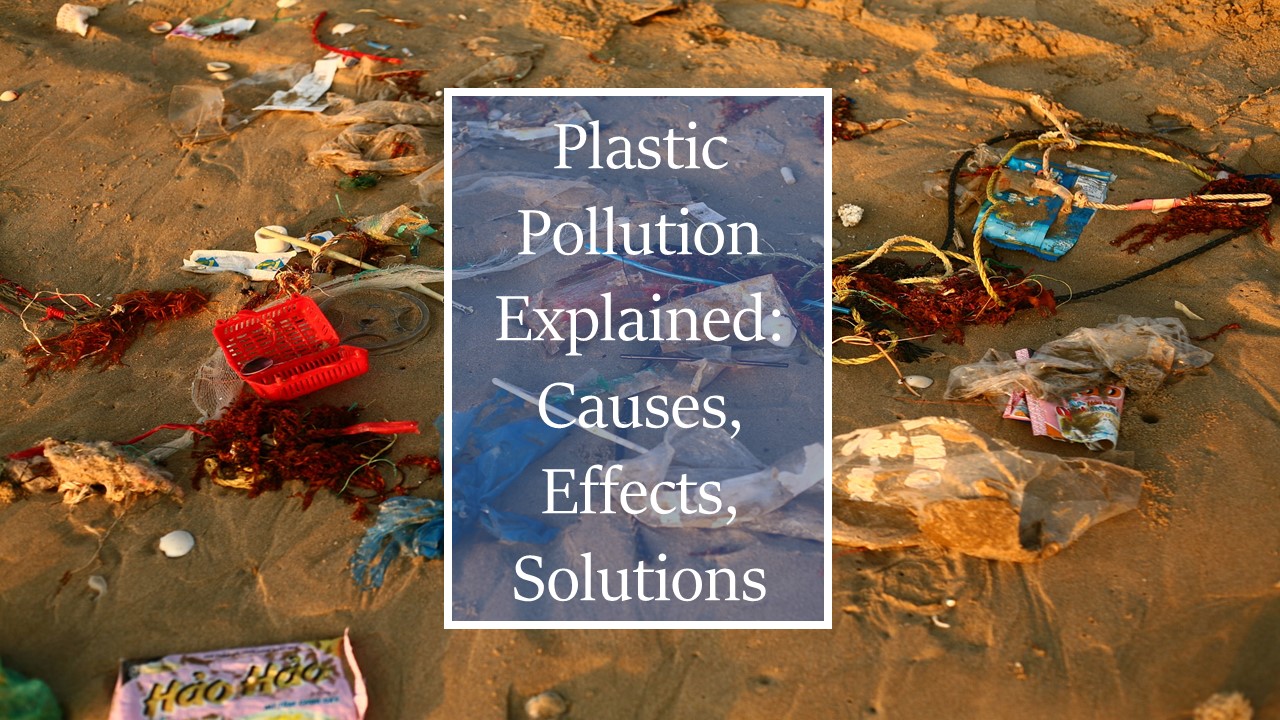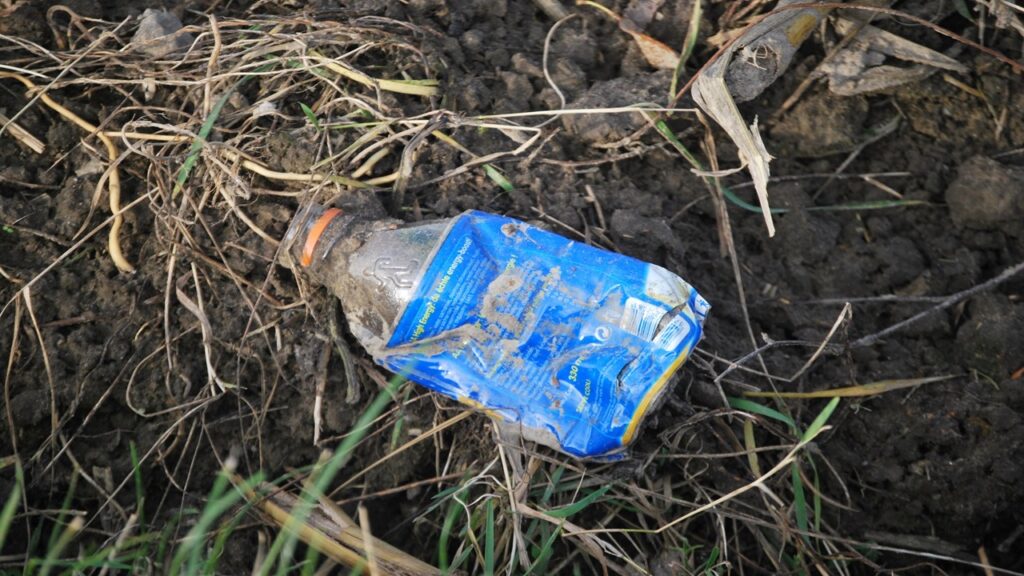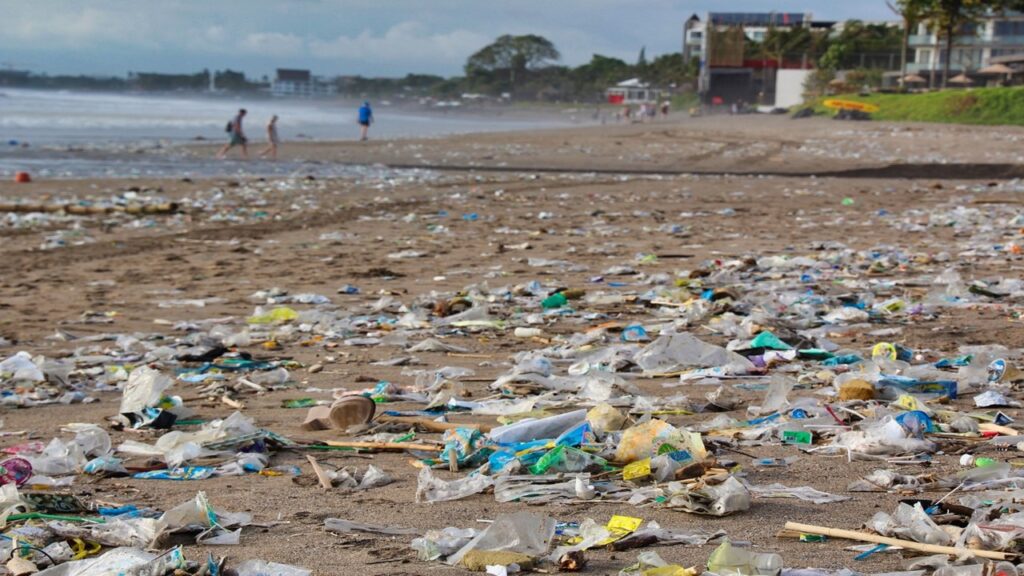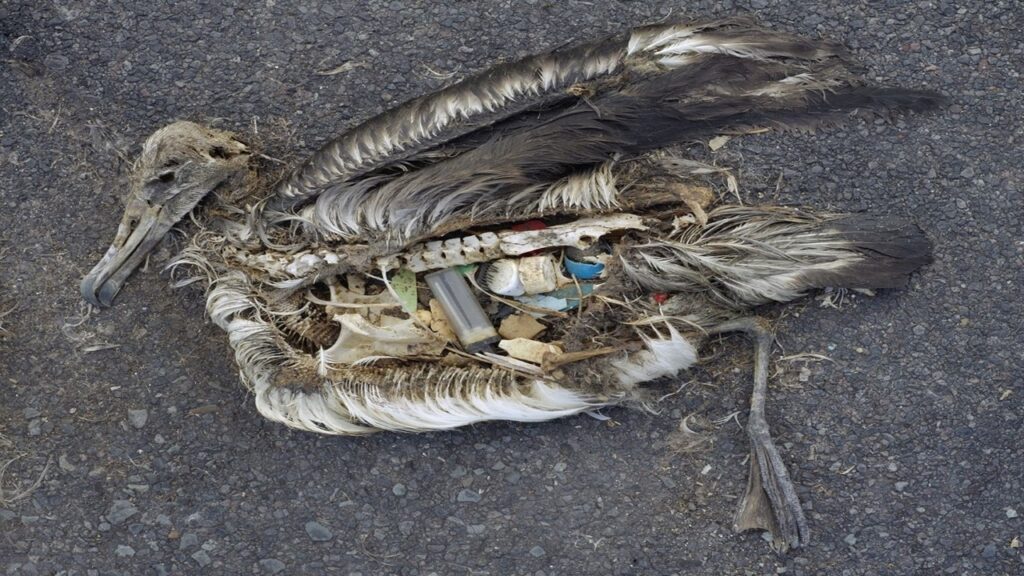Plastic Pollution Explained: Causes, Effects, Solutions

Plastic pollution has become a ubiquitous issue all around the world in the last decade. We find plastic everywhere: on the land, in rivers and oceans. If this trend continues, there might be more plastic in our oceans than fish by 2050!
What is plastic?
Plastic is a human-made material. We make it by combining polymers derived from natural oil and gas (or petroleum products).
Then we add a range of chemicals to it to enhance its performance. We call these materials plasticizers. They include additives like stabilizers, antioxidants, flame retardants and other chemicals.
Thus, these different chemicals give plastic materials their specific characteristics.
Types of plastics
To date, 20 different types of plastics exist, each with different varieties and grades. The most common plastics today are
- Polyethylene Terephthalate (PETE) (e.g. plastic bottles)
- High-density Polyethylene (HDPE) (e.g. white milk bottles)
- Polyvinyl Chloride (PVC-U) (e.g. toys)
- Low-density Polyethylene (LDPE) (e.g. plastic bags)
- Polypropylene (PP) (e.g. butter tubs)
- Polystyrene/Styrofoam (PS) (e.g. yogurt pots)
History of plastic
The Belgian chemist, Leo Baekeland, developed the first type of plastic in 1907. But it was in the 1940s and 1950s that mass production of plastic items started. We used it to make cups, saucers and components for cars and aeroplanes. Its global production was less than a million tons per year then.
Uses of plastic
Today, we produce more than 300 million tons of plastic every year. We use it in a number of products like
- Lightweight plastic components in cars and planes to decrease the use of fuel,
- Sterile dressings and medicinal products,
- Plastic casings in electrical and information technology goods,
- Disposal items like packaging,
- Furniture and design and
- Beauty and leisure products (contact lenses, spectacles, plastic teeth etc.)
Why do we use plastic so much?
Advantages of plastic
Basically, plastic has some particular properties that makes it ideal for so many uses. It is
- Lightweight,
- Strong,
- Cheap,
- Durable,
- Resistant to corrosion and
- Does not conduct heat and electricity.
In general, plastic contains numerous polymers thus making it very versatile. Because of this, we can manufacture an array of plastic products from technological equipment to energy-saving devices.
Positive effects of plastic
So basically, we use so much plastic because it has some important positive effects. For example,
- It prevents the spread of diseases when we use it in medical equipment,
- Plastic helps to make vehicles more fuel-efficient,
- We can upcycle plastic into new things when we are done with it,
- Plastic pipes are typically stronger than reinforced or metal ones,
- It is an excellent and cheap insulation medium for homes,
- And plastic improves the safety and durability of personal protective equipment like helmets.
Plastic pollution
Causes of plastic pollution
Unfortunately, the same properties that make plastic great for a number of uses also cause a lot of harm. As it is cheap, we mainly use plastic for single-use packaging. After this immediate use, we dispose of it. So, the more we consume, the more plastic trash we produce.
Eventually, water and wind easily carry it from one place to another in a matter of time. What’s more, its durability permits it to persist in the environment for hundreds to thousands of years depending on its components.

Also, tires of vehicles contain plastic components. With so many vehicles on our roads, tiny components break off during driving and spread in the surroundings.
Likewise, people can flush plastic materials like hygienic and beauty products in toilets. Or plastic fibers in clothes can come from washing and drying machines’ waste water. As it is, sewage sludge typically contains 80-90% plastic particles.
Macro-plastics, micro-plastics and nano-plastics
Generally, we call plastic that we often see like crisp bags, chocolate wrappers and plastic bottles macro-plastic. They are typically plastic materials greater than 5 mm in size. Eventually, they break down because of the sun and wave action.
Smaller plastic materials then form, called micro-plastic that are typically less than 5 mm in size. And microplastics also break down to form nano-plastics, particles less than 100 nm in size.
Today we can find both macro and micro-plastic debris in various environments. For example, in storm water runoff, freshwater lakes and streams, agricultural fields, coral reefs, deep sediments and even in submarine canyons!
Negative effects of plastic pollution
1. Plastic creates a waste management problem
So, as we use plastic on a large scale, we also produce a lot of plastic waste. However, waste management is still inadequate to non-existent in many regions. As a matter of fact, plastic debris exists in habitats from the equator to the poles.
The more we recycle plastics, the worse the quality becomes
Today, plastics account for 10% of the waste that we generate. And out of that, we recycle only a small 9%. Unfortunately, the more we recycle plastics, the worse the quality becomes. So, eventually, it becomes so bad that we cannot recycle it anymore.
Right now, plastic is accumulating in our environment at a rate of 31.9 million metric tons per year.
2. Plastic pollution decreases the aesthetic value of land and sea
Additionally, as plastics move easily with the wind and ocean waves, they often end up on land and beaches. As a result, it heavily decreases the aesthetic value of the land and sea.
Plastic pollution makes touristic areas unsightly
This is even more so for touristic areas as it makes these sites unsightly. Instead of finding corals and swarm of colourful fishes in the sea, tourists discover chocolate wrappers.

Bali, Indonesia, one of the world’s most famous touristic destinations, is such an example. Plastic trash ends up on beaches every day. Consequently, personnel, loaders and trucks must also clean up every day.
Weather conditions like monsoon swells and runoff make matters worse in such places. In many instances, tourism activities must halt to clean up beaches.
3. Heavily affects the marine environment
Though we find plastic debris in almost all natural environments, it affects the marine environment the most. Every year, at least 8 million tons of plastic make their way into our oceans. Large quantities of plastic accumulate in diverse marine regions from shorelines to deep-sea canyons.
The Great Pacific Garbage Patch
The movement of oceanic currents form gyres (whirlpool) in our oceans. Five gyres naturally occur:
- The North Atlantic Gyre,
- South Atlantic Gyre,
- North Pacific Gyre,
- South Pacific Gyre and the
- Indian Ocean Gyre
Such currents can thus transport plastic debris and amass them in particular gyres.
Today, the Great Pacific Garbage Patch is the most famous and largest accumulation of marine debris, mostly plastic, in our oceans. It occurs in an area in between California and Hawaii and is roughly twice the size of Texas.
Materials from North America and Japan typically accumulate there. But we have also noticed plastic accumulation in the gyres of the South Pacific Ocean and the North Atlantic.
4. Plastic pollution kills wildlife
Marine creatures get entangled in plastic or eat debris
With so much plastic in our oceans, marine creatures such as turtles and fish get entangled in them. As they fight to free themselves they can get hurt or die. Or it can reduce their mobility making them more vulnerable to predators. They can also eat the debris that they mistake for food which can then choke and kill them.
As it is, over one million marine creatures like sharks, birds and seals die every year because of plastic pollution in our oceans. We discover seabirds especially with stomachs full of plastic.

Hungry terrestrial animals smell food in plastic bags
Just like marine creatures, hungry terrestrial animals also smell food in plastic bags that we dump. Out of curiosity and hunger, they can get their wings, legs and heads trapped in plastic debris. In the same manner, they can hurt themselves or die while trying to be loose. Or they can get poisoned with micro-plastic over time.
5. Micro-plastics pollute the soil
As it is, many creatures including humans depend on the soil to survive. For example, we grow crops in the soil while a plethora of organisms actually live in it.
So, when plastic breaks down naturally, it forms micro-plastics that leach into the soil. Or microplastics can also come from domestic sewage that contains plastic fibres, fertilizers and tire abrasion. Even the wind can transport micro-plastics onto the land and into soils.
Unwanted toxic materials in their bodies
As a result, soil organisms can eat them leading to unwanted toxic materials in their bodies.
Micro-plastics can contaminate groundwater
What’s more, as organisms like earthworm burrow into the soil, they can push the plastic debris further down. As a result, micro-plastics can contaminate groundwater.
Plastic debris may contain viruses and bacteria
Additionally, plastic debris may contain viruses and bacteria that can spread diseases to soil organisms.
6. Leads to health issues in humans
Just like with wildlife, micro-plastic can lead to health issues in humans as well. It accumulates in our body as we feed on animals that have ingested it. It includes seafood, quail, ducks and chicken. As an example, a study shows that microplastics in fact accumulate in chicken from earthworms in the soil. And as we feed on chicken, micro-plastics can accumulate in our bodies as well.
Plastics typically contain plasticizers that have additives
What’s more, plastics typically contain plasticizers that have additives like BPA (bisphenol A), phthalates and PBDE. These chemicals can enter the bodies of toddlers as they mouth plastic toys. They can also get into the bodies of adults when they ingest things wrapped in plastic that contain these chemicals.
How to reduce plastic pollution?
Since plastic is a universally used product, we cannot stop using it altogether until we find alternatives. But there are certain ways in which we can considerably decrease plastic pollution.
10 ways to reduce plastic pollution
- Stop the use of single-used plastics such as bags,
- Recycle plastic products,
- Reuse plastic containers for example as flower pots,
- Use your own kitchen utensils like cutlery and cups, or use wooden ones,
- Use bamboo and paper straws,
- Buy in bulk or in larger amounts; for example, choose a bigger yoghurt pot instead of many smaller ones,
- Government and institutions must put in place regulatory laws and instruments for plastic pollution,
- Opt for biodegradable plastic made with biopolymers,
- Pick up plastic litter and help in clean-up campaigns whenever possible and
- Encourage your peers to decrease their plastic usage.

Pingback: 10 ways to be eco-friendly in everyday life – YoNatureBlog
Pingback: Strategies to Effectively Tackle Plastic Pollution in Mauritius - Yo Nature